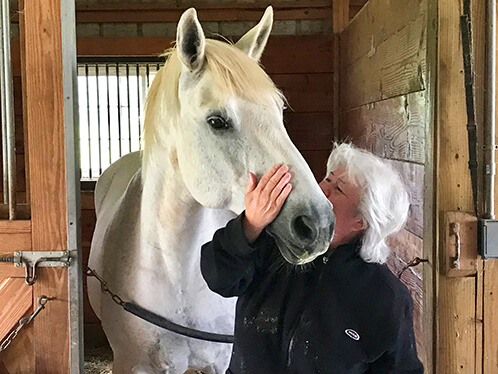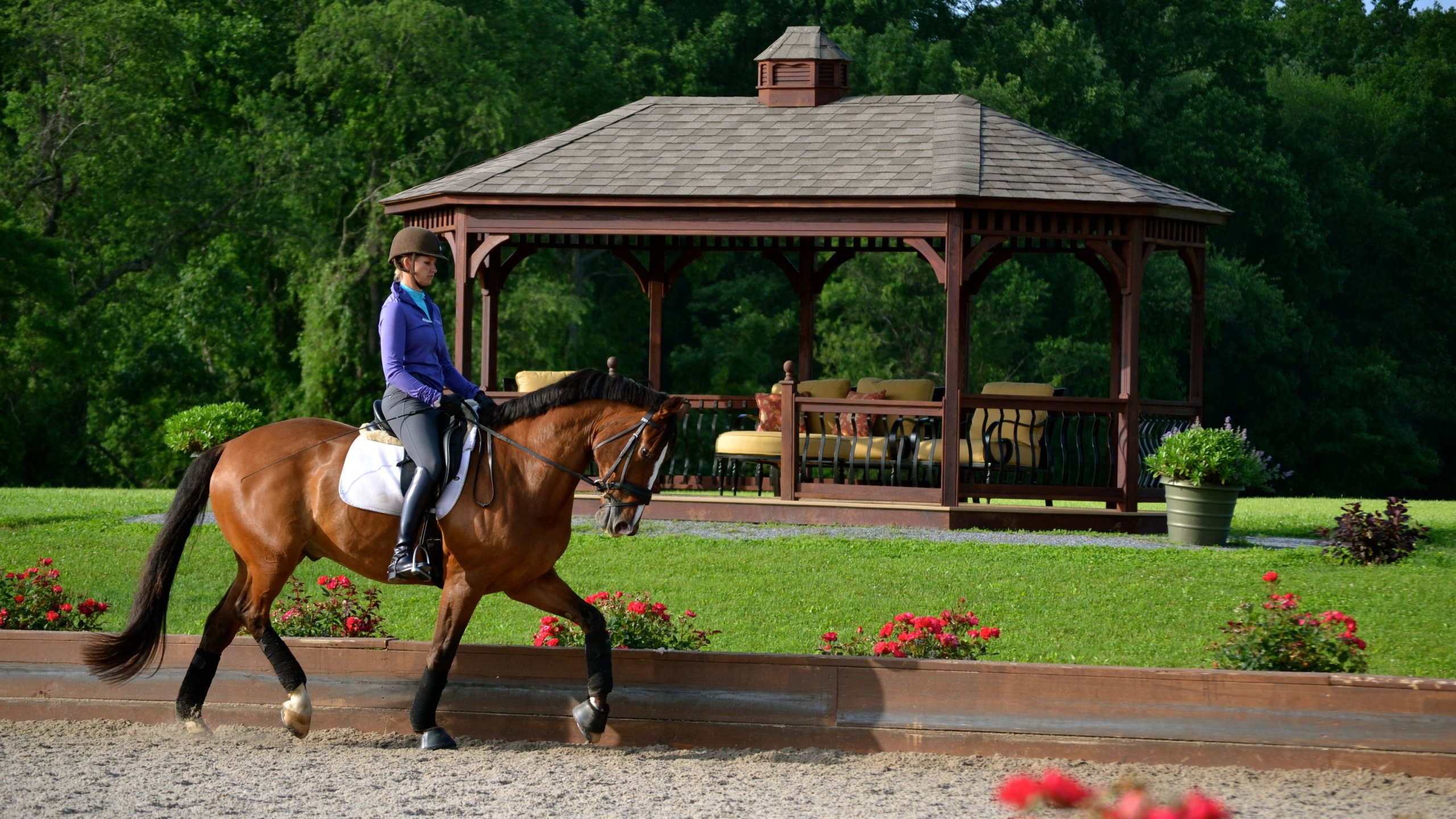If you’ve ever spent the day working in the heat under the glare of full sun in the “dog days of summer” then you know firsthand how heat exhaustion and sunburn can creep up on you. As a clinician, I have certainly spent my fair share of time giving instruction to riders from the center of a dusty, hot arena baking myself to a crisp. I’ve also suffered with skin cancer—possibly as a direct result.
Many of my equestrian colleagues have also experienced skin cancer, and it is a concern for all folks that work outside in the sun. Many equestrian clothing companies provide SPF protection for riders with specially treated fabrics that do a great job of helping athletes protect themselves from the ravages of exposure to the sun’s rays. That is an awesome help. But there are other ways you can help yourself, your family, friends and students.
Training and riding horses outdoors keeps them mentally fresh and is to be embraced as part of a solid training regime for both horse and rider. While the outdoor arena may not be in the shade and the rider and horse may have to work in the sun for an hour, it doesn’t mean that instructors, auditors and other visitors can’t benefit from provision of a structure to shelter from the harmful rays of the sun.
The addition of a pavilion next to the arena is a simple way to provide a cool, comfortable space where folks can safely enjoy listening and learning from others’ lessons. Parents of students, and all friends and family of the barn brigade will enjoy the benefits a pavilion provides. Pavilions are ideal structures for fundraising events, tack sales, barbeques, and gatherings of all sorts.
Many horse show facilities, such as HITS in Saugerties, NY, have added freestanding pavilions to their showgrounds, placing them adjacent to warm-up rings and competition arenas for the comfort of spectators. In addition to providing shelter from the sun, the structures also protect the attendees from summer rain showers. There are many ways to elevate your event show season with outdoor structures.
Historically, the classic pavilion structure was attached to a main building and was used by royalty in the architectural design of palaces and mansions. The Chinese pavilions in the Forbidden City are a great example. Often pavilions were added to each end of a mansion to provide additional ornament to the building, as seen in 18th Century British houses such as Houghton Hall. Pavilions were also designed as freestanding structures and were almost always used as places of pleasure for activities such as banquet dining and musical entertainment (hence the bandstands that we see today).
Pavilions come in all shapes, sizes, heights, and designs, and their presence can add significant value both for aesthetic appeal and focal point in the outside setting. Their open sides offer a 360-degree view for the occupants, allow summer breezes to cool the shaded interior, and cost less to build than an enclosed structure. Additionally, a pavilion can accommodate groups of all sizes, from small to large without the fixed boundaries of walls to hamper the gathering.
Elegant archways, decorative skirts and trim, and lined tongue-and-groove ceilings all add to the aesthetic appeal of a pavilion. Functional additions such as ceiling fans and lighting can further enhance the structure, and creative uses for relaxation can even include a hot tub or cooking station.
Construction materials used run the gamut, ranging from maintenance-free vinyl covered wood to traditional wood, stone, and even marble. Pavilions can be purchased as a prefabricated kit, aiding construction in more remote locations.
A myriad of styles and designs can be selected online, shipped to your farm, and quickly assembled onsite. The lumber members of the kit are precut and pre-drilled, making it a giant jigsaw that’s easy to construct. All hardware and roof shingles should be included in the purchase price; you simply provide the tools and the labor.
A pavilion can be placed over level ground that is finished with gravel, stone, concrete, or even just grass (though grass is not an optimal choice as it will quickly turn to dust with a high level of foot traffic).
Interior seating can be foldaway chairs, garden furniture such as durable polyvinyl, or lightweight aluminum bleachers set inside.
The added value that a pavilion provides for visitors to the horse farm or showground is well worth considering. The better the experience folks have visiting your farm, the more time they will want to spend participating in your events and lesson program. A pavilion can also provide a safe zone for children and others with less horse sense, and for those who are not comfortable standing at the rail and who would prefer to be seated.
This article is courtesy of Horizon Structures Inc., Atglen, PA – Modular horse barn specialists. Please visit www.HorizonStructures.com to learn more.
Nikki Alvin-Smith is a writer and creative content producer. Please visit nikkialvinsmithstudio.com to learn more about her affordable services.
See all Colorado Horse Source Magazine articles by Nikki Alvin-Smith

Nikki Alvin-Smith is a seasoned freelance writer who loves to share her lifelong experience with everything horse, farm and travel. Her work has been printed in more than two hundred fifty equestrian magazines worldwide and her published articles number in the thousands including travel and lifestyle press.
A Brit who has called New York home for more than 37 years, Nikki brings a unique perspective to her writing.
Her experience as an international level Grand Prix dressage competitor, coach and worldwide clinician, with a youth spent showjumping and foxhunting, provides lots of educational truths and fun moments to share with the reader. Additionally, she has been a horse breeder and importer of Hanoverian, Dutch and Iberian horses for more than 25 years.
Visit nikkialvinsmithstudio.com to learn more.

